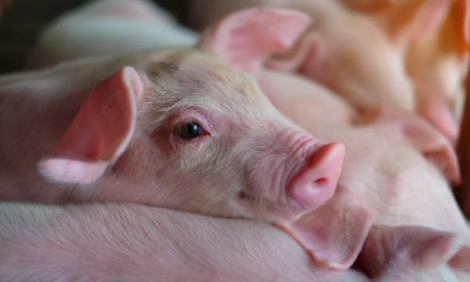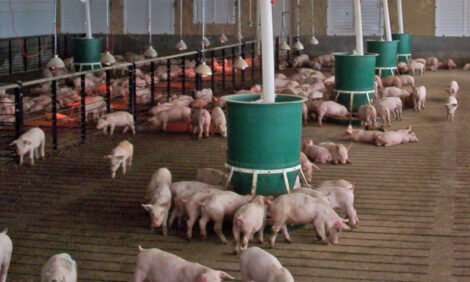



Improving Meat Quality in Pork and Bacon
By Livestock Knowledge Transfer, UK - This article looks at the techniques involved with rearing pigs for a high quality of meat, and discusses factors affecting tenderness and flavour.
Improving Meat Quality in Pork and Bacon - By Livestock Knowledge Transfer, UK -
This article looks at the techniques involved with rearing pigs for a high quality of meat, and discusses factors affecting tenderness and flavour.
Tenderness, juiciness and flavour are scored on 1-8 scales by a group of 10 experienced assessors (the taste panel) after standard processing and cooking regimes.
Higher scores mean higher tenderness and scores above 5.0 would be identified as acceptably tender by consumers.
Values above 0.2mg/kg may be detectable and disliked by consumers of pork.
All consumer products are searching for higher levels of quality. Quality is providing consumers with what they want.
For pork and bacon, quality is:
- Assurance on animal welfare and food safety (provided by membership of a farm assurance
scheme)
- Meat quality:
- Colour/drip
- Tenderness
- Juiciness
- Flavour
Tenderness is influenced by:
- Considerate handling between farm and abattoir – stressed pork is tough
- Fast uninterrupted growth to slaughter – growth checks produce tough meat
- Correct genetics – muscle acidity (pH) in range 6.0-6.3 1 hr after slaughter and 5.5 – 5.7 at cutting.
Consider halothane gene-free stock
- Correct processing – tenderness is reduced if chilling is too rapid
- Hip suspension and electrical stimulation of the carcass increase tenderness
- Like beef, pork benefits from longer conditioning/ageing (7-10 days at 1ºC for loins)
Effects of processing on pork tenderness
(results from different projects at Bristol University)
|
Carcass suspension |
Conditioning time |
Chilling |
|||
|
Normal |
Hip |
1d |
10d |
Rapid |
Slow |
|
3.9 |
5.1 |
4.2 |
5.2 |
3.6 |
4.0 |
Tenderness, juiciness and flavour are scored on 1-8 scales by a group of 10 experienced assessors (the taste panel) after standard processing and cooking regimes.
Higher scores mean higher tenderness and scores above 5.0 would be identified as acceptably tender by consumers.
Juiciness is influenced by:
- Genetics. Muscle acidity and marbling fat are important.
Consider halothane gene-free Pietrain and Duroc boars
- Diet. Reduce protein in later stages of growth – promotes marbling fat
Flavour is influenced by:
- Diet. Correct balance of oils is important
- Boar taint. Entires are efficient producers of lean meat but taint is a problem in a very small proportion of carcasses. Castration is common in mainland Europe for this reason.
Correct diet and genetics can help
Boar taint (skatole) level in pork (mg/kg)
Breed |
Diet |
||
|
Large White |
50% Meishan |
Standard |
+ Sugar beet pulp |
|
0.12 |
0.62 |
0.1 |
0.04 |
Values above 0.2mg/kg may be detectable and disliked by consumers of pork.
Color
- Pale wet pork occurs when pigs are stressed because of poor handling and is common in
halothane gene carriers. Stress over a longer period causes dark, high pH meat.
Both these extremes are to be avoided
- Vitamin E: raised level in the diet (>100mg/kg) delays colour change from pink to brown – extends shelf life
Payments for meat quality
- Processors and retailers want to increase levels of meat quality
- One way is to specify genetics and diet – as in some ‘linked’ contracts
- Measuring quality on a proportion of carcasses, using pH, colour and taste panels, may increase in the future and could be linked to payments

Source: Livestock Knowledge Transfer - First published 2001. Added to this site 2003.








